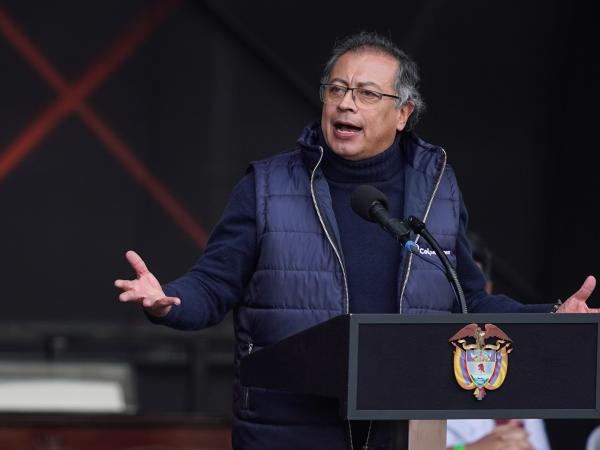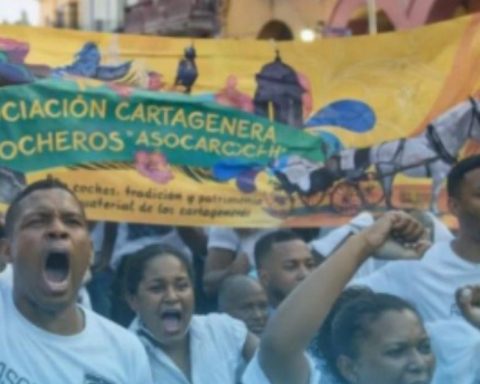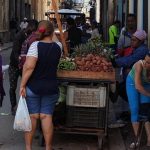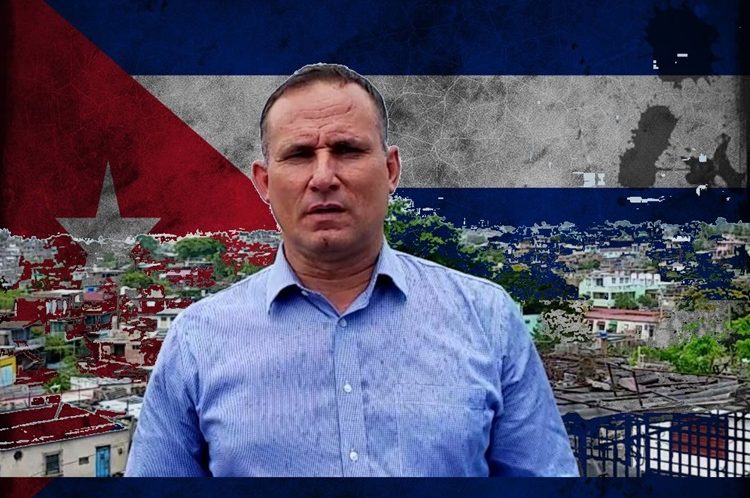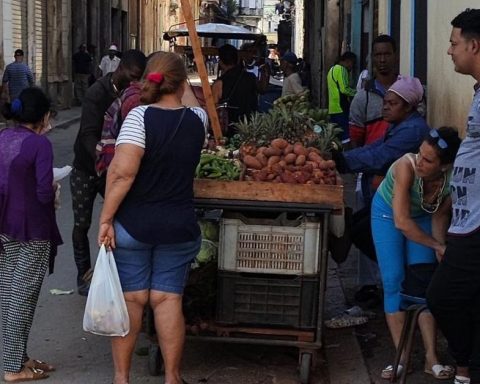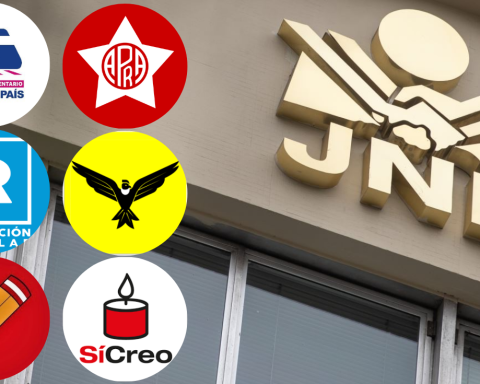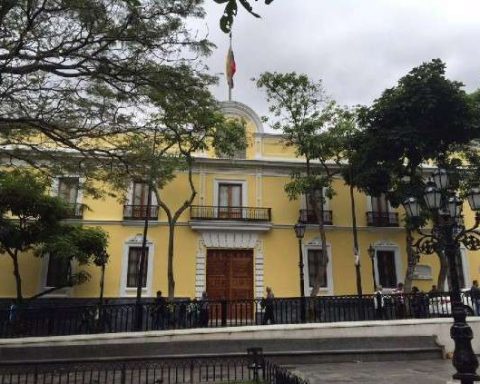The main goals of the National Development Plan (PND) 2024-2026, in two years of Government of President Gustavo Petro are going at a slow pace in the agricultural sector, where central purposes are at risk of failing, while in trade and industry the dynamics are more positive.
(Read: Bioeconomy, option to recover industrialization in the country)
And although the proposals may be ambitious, according to experts, the truth is that, at least in the agricultural field, the plans will not have enough time to be effectively implemented. An example of this is the massive handover of land in the country.
Documents from the National Planning Department (DNP) record that one of the main goals of this Government, under the jurisdiction of the Ministry of Agriculture, is to deliver 2.9 million hectares, advancing restitution and titling as one of the essential instruments to achieve peace and boost national agricultural production.
(See more: Using AI will help generate profitability and productivity in agriculture)
However, when reviewing the details of some of the land delivery indicators, the goal of ‘Hectares delivered through the land fund’ is observed. a progress percentage of 0%. There is not even a cut-off date, which could imply that this process has not yet begun.
According to experts, the attempt to reach 3 million hectares of land was an ambitious bet, which no matter how much it is intended, This will not be achieved in the two years remaining in Gustavo Petro’s term.
(Read also: Rice farmers and the Government have approached each other to discuss the storage incentive)
Enrique Herrera, a land expert, told Portafolio that according to what the Government has said, the purchase of land is in the order of 160,000 hectares, Added to this is the fact that they have purchased another 15,000 from February to July.
Agro
The Weather Archive
“They would need to buy 45,000 hectares monthly, that is, an area like that of Bogotá and with a smaller budget for 2026. As we have said, this will be, although it already is, a failed policy.“, the expert said.
(See more: Government would recognize rural areas within forest reserves: what does it mean?)
For her part, the former Minister of Agriculture, Cecilia López, points out that before her departure She proposed lowering the target from 3 million to 1.5 million hectares, taking into account the complexity of the process.
“There is no chance that they will be able to meet that goal. At the current rate, they will not even reach 500,000 hectares.. With the arrival of Jennifer Mojica, confusion arose, because with me, Gerardo Vega, former director of the ANT, sent all those figures directly to the Palace. For us it was a feat to understand what was being done,” said López.
(Read: ‘Our America is a power to confront the climate crisis’: Ministry of Agriculture)
Another of the Government’s great promises in its NDP was the formalization of small and medium-sized rural property. According to the objectives, The goal is to end the four-year period with 3.9 million hectares formalized through titles to subjects of social order. However, so far the progress of this indicator is at 0%.

Cecilia López, Minister of Agriculture and Rural Development.
Sergio Acero / THE TIME
For Herrera, this is a national imperative but it is not moving forward in a positive way.As of May 15, only 284,967 hectares have been registered in the Public Instruments Registry offices, that is, those that effectively and legally transfer the property from the State to the successful bidder.“, he estimated.
(See: ‘Being against agrarian reform is going against the balance of life’: Petro)
In addition to the two previous ones, another of the flags of this mandate has been the Multipurpose Cadastre. Based on the indications of the PND, The goal is to update this tool, going from 9.4% in 2022 to 70% in 2026.
Unlike other indicators, the DNP recorded that as of December 31, 2023, this factor has advanced by 17.71%. However, Experts believe that this goal was abandoned in favor of giving priority to the land distribution policy.
(Read: Alpina will buy surplus milk from small producers in the face of crisis in the sector)
“The Multipurpose Cadastre is an ideal instrument for knowing the territory, having not only physical and legal information about the property, but also economic, environmental and social information and from there, organizing it. It was abandoned due to a policy of handing over land ownership that is not only failed but is not the way to rescue either the countryside or rural Colombia.“, Herrera said.

Agro
Courtesy
Likewise, Cecilia López added that during her ministerial administration the idea was to identify the 6 million hectares that were being analyzed that deserved proposals and from there direct the Cadastre.But that It was never achieved because when I proposed that, the President was obsessed with express expropriation and we could not move forward.“, he noted.
(Read More: Solinftec expects to deploy 20 agricultural robots in Latin America by 2025)
It is worth noting that there are other goals in this portfolio that have shown better progress. For example, the traceability systems for agricultural products have been managed at 100% in two years, as well as achieving new sanitary and phytosanitary admissibilities for the diversification of exports, which is already at 70.83%.
Other important ones are those related to credit and insurance. In the case of the second, the goal has already reached a progress of 57.22%, while the credit promotion operations for small producers are at an execution level of 32.51%. Meanwhile, the area with existing small-scale irrigation districts rehabilitated, supplemented and modernized has advanced by 56.85%.
(See also: The Comptroller’s Office’s findings in auditing the National Land Agency)
However, according to experts, the goals championed by the Government have been ambitious and It is most likely that they will not be fully fulfilled by the end of the term of office.

Colombian agriculture.
THE TIME file
A Ministry of Commerce that is achieving goals?
Meanwhile, during Gustavo Petro’s government, the development of the trade, industry and tourism sectors has been prioritized, especially to transform the country’s economy. The Ministry of Trade, Industry and Tourism reports that reindustrialisation policies are being largely managed.
(Read More: These are the sectors that have benefited the most from the FTA with the EU, 11 years after its validity)
Some of the ones that stand out are that The public and private sectors worked together to resolve 70 barriers that affect business development in key sectors for the productive bets of ‘Health’, ‘Agroindustry and food sovereignty’ and ‘Defense and life’.
They also claim that they managed to expand the offer of technical assistance services, strengthening, business development, closing productive and commercial gaps, and productive linkages in the country. According to the data, they went from 23 to 32 departments, which have benefited productive units and micro-businesses of the popular economy as well as micro, small and medium-sized companies.
“This represents a 349% increase in the resources allocated to these beneficiaries, responding to the productive efforts of the territories, going from $51,713 million in 2022 to $232,304 million in 2023 and 2024.“, the ministry said.
(See: Entry into force of customs statute postponed until next year)
It should be noted that one of the indicators that has shown the greatest dynamism has been that of the productive units of the popular economy that benefit from financial inclusion instruments, which according to the DNP, Its execution reaches 374.74% so far this period.

Zasca Reindustrialization Centers.
But on the other hand, according to the information presented by the DNP, in the goal of participation of exports of non-mining energy goods and services in total foreign trade, The progress has been 97.2% as of December 31, 2023, when the goal was to reach 55.8% at the end of the four-year period. That is, it has already been practically achieved.
Similarly, the creation of Zasca reindustrialisation centres in operation is 68.75% complete as of 30 June this year. It is worth noting that the goal is to reach a total of 32 of these centers and to date 22 are in operation.
(See also: Freight prices will continue to rise until December)
“In detail, 6,837 beneficiaries were served in the period, of which 4,020 are women. Additionally, the number of active intermediaries increased to 17 and to date, there is a cumulative total of 93,208 beneficiaries with financial inclusion instruments.“, adds the DNP.
In turn, the president of AmCham Colombia, María Claudia Lacouture, considers that the results of this series of goals in foreign trade that the Government set with the objective of diversifying the economy, strengthening the national industry and promoting sustainable development, They are not black or white, but rather light-dark.
(Read also: Climate phenomena are posing a tough challenge for the Providencia sugar mill)
“In trade, the country has built on what has been built mainly through the use of trade agreements, opening up spaces for their improvement. However, Colombia has been affected by the international slowdown, which has resulted in a decrease in exports. Factors such as inflation, high interest rates and a volatile exchange rate have made industrial and business operations more expensive, reducing competitiveness in foreign markets.“, said.

Non-mining exports
Courtesy
What is missing in trade?
According to Maria Claudia Lacouture, Currently, certainty must be provided to create confidence that Colombia provides the conditions for investment.. Additionally, it states that it is necessary to boost the capacity of the business fabric and improve its productivity through various tools.
(Read: Non-mining goods exports grew by 6% until May)
Some of the ones he mentioned are access to soft interest rates for loans aimed at production and export processes, training, product adaptation, simplification of procedures that resolve all obstacles. that are preventing economic development in which all entities involved in trade participate.
“The blocked investments that already have project presentations with resources must be determined, to expedite environmental permits through the Anla and facilitate prior consultation.“, he pointed.
(See more: Rising freight prices threaten to hit the country’s inflation)
He also added that both industrialization and investment attraction require trust, clear rules and certainty, “Send clear messages to entrepreneurs and promote internal actions that foster business development that generates progress, economic growth and employment“.
